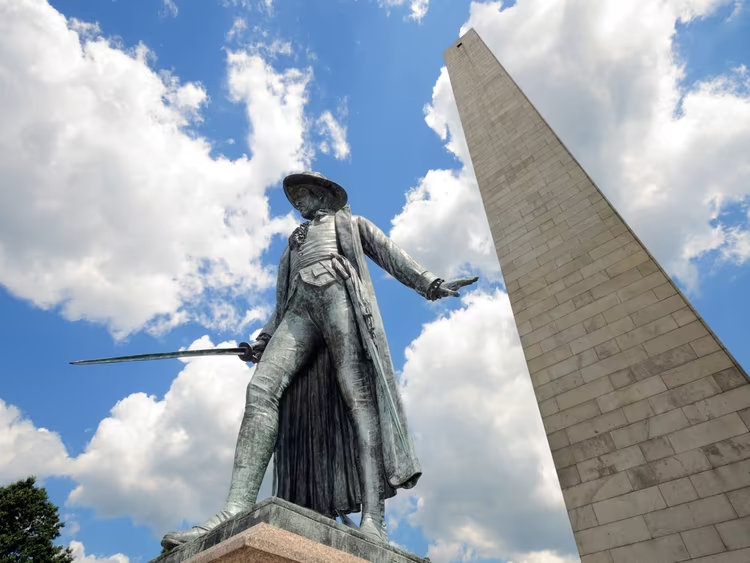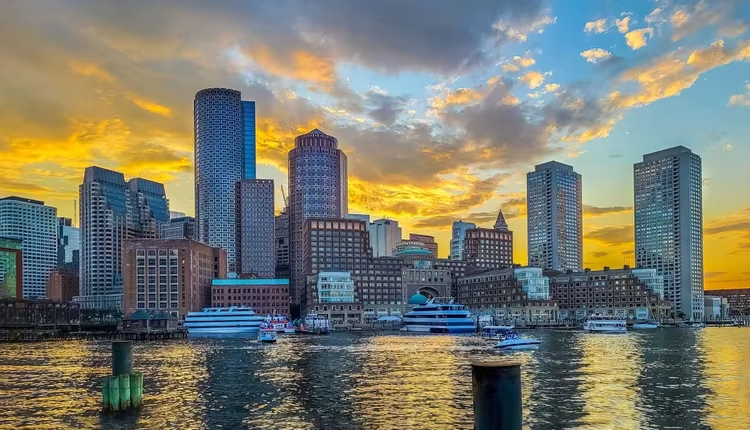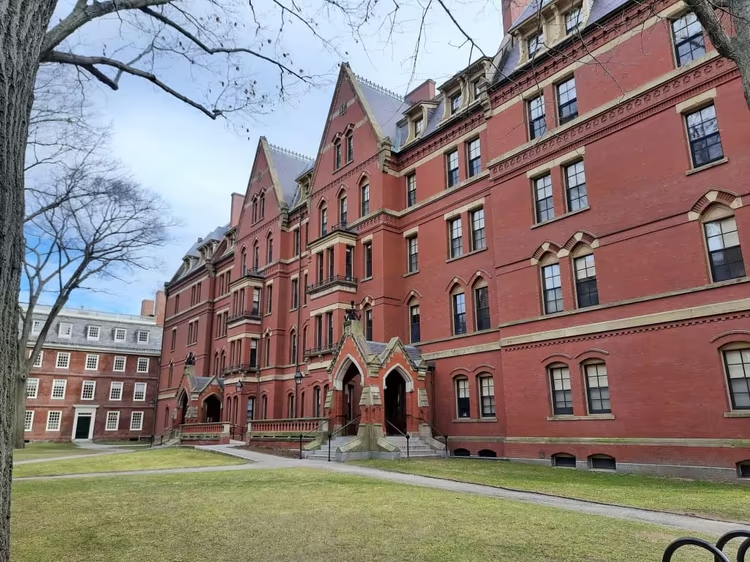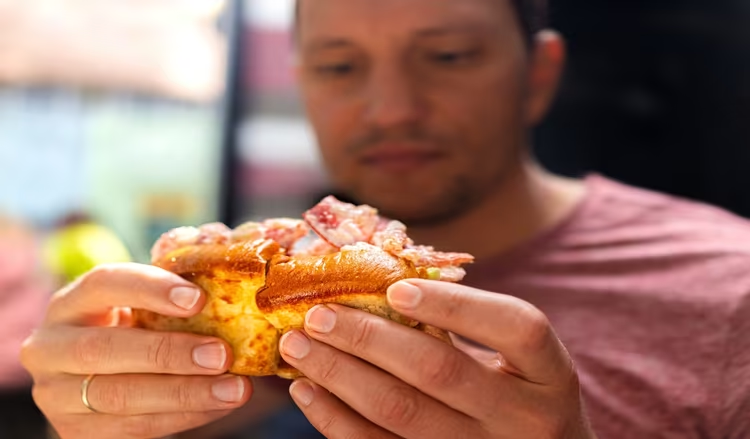My Bookings
Please Enter Your Booking Code To Find Your Booked Tour!
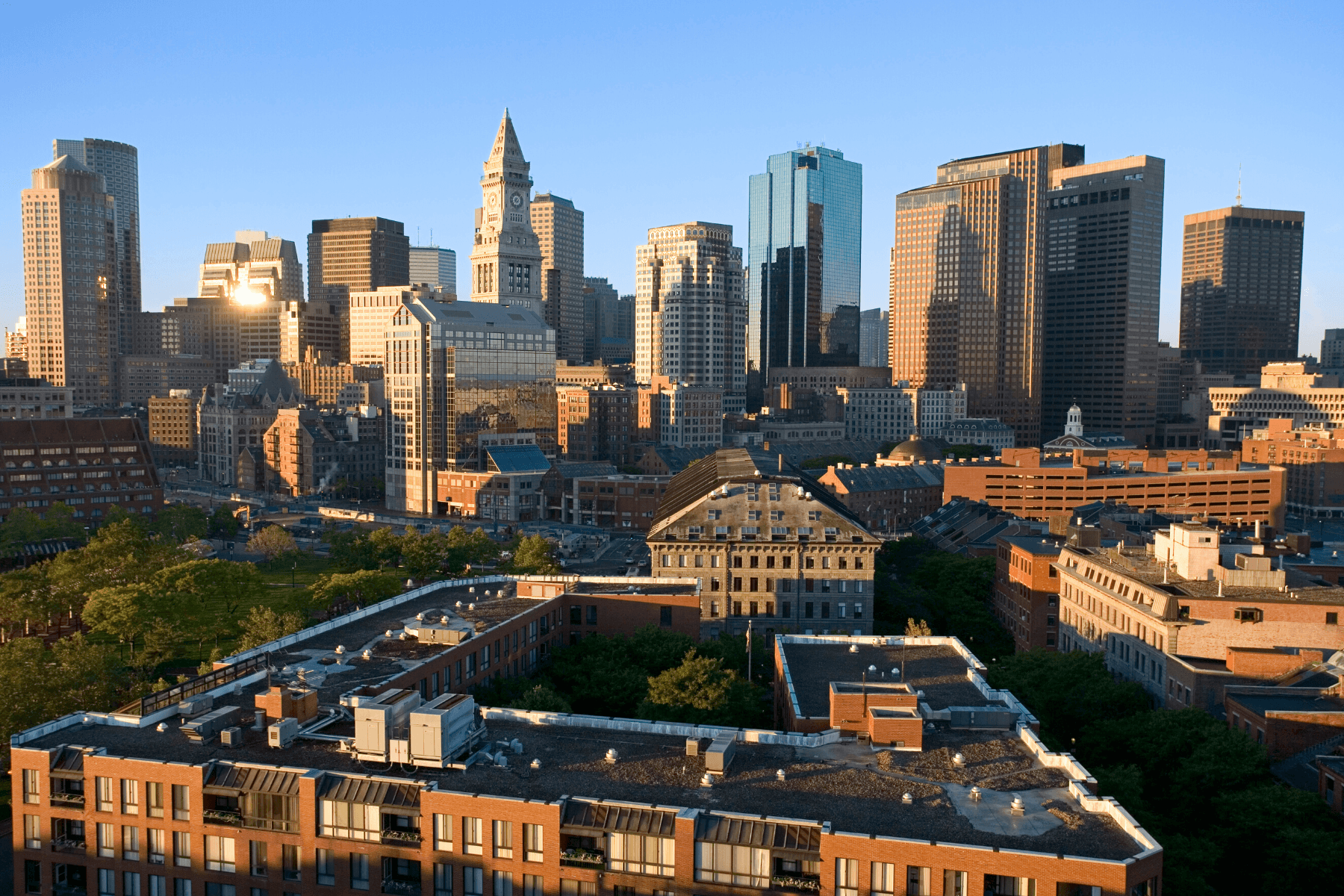
16 Historic Stops Along the Patriotic Freedom Trail in Boston, MA
Table of Contents
Follow us along all 16 stops on Boston’s Freedom Trail, a 2.5 mile (4 km) red brick trail through Boston’s historic neighborhoods, beginning with Boston Commons in downtown Boston and ending with Bunker Hill Monument in Charlestown. Founded in 1951, the trail tells the story of the American Revolution paying tribute to notable American figures such as Paul Revere, John Hancock, and Benjamin Franklin. To complete the tour on foot it can take up to a full day, so follow along as we take you through some of the steps Paul Revere took during his midnight run, alongside many other historical events.
Enjoy Your Time In Boston With See Sight Tours
1. Boston Common
The Boston Common, America’s oldest park, was built in 1634, the first owner being William Blaxton, the first European settler of Boston. Over the years the 50 acres of land has served multiple purposes such as; cow pastures, camps during the war, dumping grounds, and protests, today the park is used for both informal and formal gatherings. Some notable events that have occurred at the park include; speeches made by both Martin Luther King Jr and John Paul II, it is also the site of Judy Garland’s largest concert, with over 100,000 attendees in 1967. In 1987, it was named a U.S. National Historic Landmark, managed by the Boston Park Department and cared for by Friends of the Public Garden.FUN FACT: In 2006, on October 21 the Common became the site of a new world record when citizens lit 30,128 Jack-o-Lantern’s around the park at the Life is Good Pumpkin Festival.
2. Massachusetts State House
Also known as the New State House, built in 1798 the Massachusetts State House lays atop Beacon Hill on 6.7 acres of land across from the Boston Common. Designed by Charles Bulfinch , the building serves as the state capital and seat of government for the Commonwealth of Massachusetts, considered a masterpiece of Federal architecture, recognizable for its golden dome. Inside it contains the Governor’s offices on the west end, the Massachusetts Senate located under the golden dome, and the House of Representatives on the west side in the Brigham edition.The walls are decorated with murals from many artists including Albert Herter and Edward Brodney, who had won a competition to paint the first mural in 1936. Brodney was actually unable to afford models to pose for his mural titled “Columbia Knighting Her World War Disabled” so he instead enlisted his friends and family, doing so again for his second mural “World War Mothers”.
Visitors are able to virtually watch hearings and sessions taking place in the building: Massachusetts State HouseFUN FACT: the dome for the Massachusetts State House was covered in copper in 1802, constructed by Paul Revere’s Revere Copper Company, making Revere the first American to successfully roll copper into sheets!
3. Park Street Church
Founded in 1809, Park Street Church designed by Peter Banner was the first structure travelers saw when approaching the city due to its 217-feet steeple. The church is the site for many firsts including America’s first Sunday School in 1818, and William Llyod Garrison’s first public statement against slavery in 1829. The church was created when a small former group of the Old South Church was inspired by Rev. Henry Kollock, a visiting minister whom they had asked to be their first shepherd, inclined to accept Rev. Kollock said he would do so once a church and building was established, the congregation then raised $70,000 to build a grand church seating over 800.
Today, the church typically brings in around 2,000 worshippers across Sunday services with up to 1,000 members, though membership records are kept private. Not only is the church well known for its theological history forming three seminaries (Andover-Newton, Gordon-Cornwell, and Fuller), it is also known for its role in social justice and human rights. Park Street Church was among the very first to address prison reform, education, women’s suffrage, and anti-slavery.
FUN FACT: with its 217-foot steeple the Park Street Church was the tallest building in the United States up until the construction of Trinity Church in New York.
Open for tours June to August visit Park Street for more information or to book a group tour via zoom.4. Granary Burying Ground
Dive into Boston’s third-oldest cemetery, the granary burial ground, founded in 1660. It is believed to have 5,000 individuals buried there but only 2,345 grave-markers, laying to rest many notable Revolutionary War-era patriots including; Paul Revere , the 5 victims of the Boston Massacre, Samuel Adams , Samuel Adams , John Hancock , and Rober Treat Paine ,three signers of the Declaration of Independence, and members of Benjamin Franklin’s family. Towards the back of the grounds is where tombs were initially placed, Puritan churches at the time did not believe in religious icons or imagery so instead, they used tombs as an artistic expression of their beliefs surrounding the afterlife. A motif commonly seen in the Granary is the “Soul Effigy” which depicts a skull with a wing on each side which serves as a representation of a soul flying to heaven, some other common depictions you may see when visiting is the Grim Reaper and Father Time. The largest monument you will see when entering the Granary is the obelisk Franklin Monument constructed by Boston citizens in 1827 replacing the old worn-out original gravestones. Don’t be fooled, however, Benjamin Franklin is not laid to rest here but in Philadelphia, instead, the monument serves as the resting place for his parents Josiah Franklin and Abiah Folger alongside some of his siblings. Open daily from 9 a.m. to 4 p.m. visit Granary Burying Ground for more information.5. King’s Chapel and King’s Chapel Burying Ground
Founded in 1686, King’s Chapel is the oldest Anglican church, home to over 330 years of American history, it was also the first state-sanctioned, non-Puritan church in the predominantly Puritan city. The American Revolution plays an integral role in the history of the church as only a small group of people stayed in Boston as the British troops evacuated the city during the war, those who remained joined. After going years without a minister the church transformed its congregation under the leadership of James Freeman throughout the 1780s. The pulpit built in 1754, is the oldest in the US and the magnificent interior was also built around the original stone structure in order to continue to worship during construction. The bell, originally formed in England was recast by Paul Revere in 1816 after it had cracked in 1814, still rings to this day to call for worship.
For more information about King’s Chapel visit: Kings Chapel King’s Chapel was built atop the oldest English burial ground in Boston, now referred to as King’s Chapel Burying Ground. It is estimated to have at least 1,000 individuals buried there with only 505 headstones, 59 footstones, and 78 tombs with only 38 marked, some of the individuals laid to rest there include; Mary Chilton a Plymouth Pilgrim that was the first European women to step off the May Flower and ashore in New England and C Elizabeth Pain whose headstone is rumored to have been the inspiration for Hester Prynnes’ in the Scarlet Letter. In the early 19th century, time was taken to beautify urban burial grounds, adding pedestrian footpaths, iron fencing, various plantings, and steps were even taken to rearrange the gravestones into straight rows which caused inconsistencies between the markers and the bodies underneath. We recommend a stop at Joseph Tappings headstone located at the front of the burying ground, arguably one of the most beautiful gravestones in the city, maybe even country, with a depiction of a skull battling Father Time over the inevitability of death. For more information about King’s Chapel Burying Ground visit: Kings Chapel Burying Ground6. Boston Latin School and Benjamin Franklin Statue
The Boston Latin School was founded in 1635 by the Town of Boston making it not only the oldest public school in America but also the oldest existing school in the United States. The curriculum followed the 18th century Latin School Movement, which emphasized the importance of learning the classics, aiming to educate young men, offering free education to boys both rich and poor. Up until the 19th century, the school only consisted of male attendees and faculty, that was until Helen Magil White not only the first female to graduate but the first woman to earn a doctorate as well, while she was in attendance at school she was the only female. The school was torn down in 1745 in order to make space for an expansion for King’s Chapel, however, the school has continued onwards to different locations with its current location in the Fenway neighborhood as of 1972, admitting both boys and girls.Of the many students who attended the original school site, were 5 signers of the Declaration of Independence; Benjamin Franklin, Samuel Adams, William Hooper, John Hancock, and Robert Treat Paine, of these 5 men, Benjamin Franklin was the only one to graduate. The original site for the school is marked by one of its famous graduates, Benjamin Franklin, standing 8ft tall the statue rests on a 9 ft marble and granite base that features a front and back plaque, the front depicting Franklin experimenting with electricity and the back him in his printing shop.
FUN FACT: Cornelia Kelley was the first female headmaster hired in 1998, serving until her retirement in 2007, and in 2017, Rachel Skerritt became the first person of color to serve as headmaster.
7. Old Corner Bookstore
Located on what was formerly the home of Anne Hutchinson, a controversial religious figure until she was expelled from Massachusetts in 1638 for heresy, the Old Corner Bookstore is the oldest commercial building in Boston, constructed in 1718 and purchased by Thomas Crease. It remained his residence until it burnt down in 1711 during the Great Boston Fire. Crease then rebuilt a new building on top in 1817 to serve as both a residence on top floors and an apothecary on the bottom floor. It first became a bookstore in 1828 when Timothy Harrington Carter leased the space, then from 1832 - 1865, it served as the space for publishing giants Ticknor and Fields , transforming the bookstore into a meeting place for some famous American literature authors such as Charles Dickens and Nathaniel Hawthorne.Following the death of Ticknor, Fields in 1865 sold the store to E.P. Dutton then a succession of other booksellers and publishing companies followed through the 1890s. In 1960 the building was being considered to be demolished in order to construct a parking garage, luckily the historic building was saved by Historic Boston, Inc., not-for-profit preservation and real estate that rehabilitates historic and culturally significant buildings in Boston. The building is currently the site of a Chipotle restaurant, a great spot to stop and eat while on the trail.
FUN FACT: among the many published works that were produced in this building, Hawthorne’s The Scarlet Letter is one of them along with Longfellow’s Midnight Run of Paul Revere.
8. USS Constitution
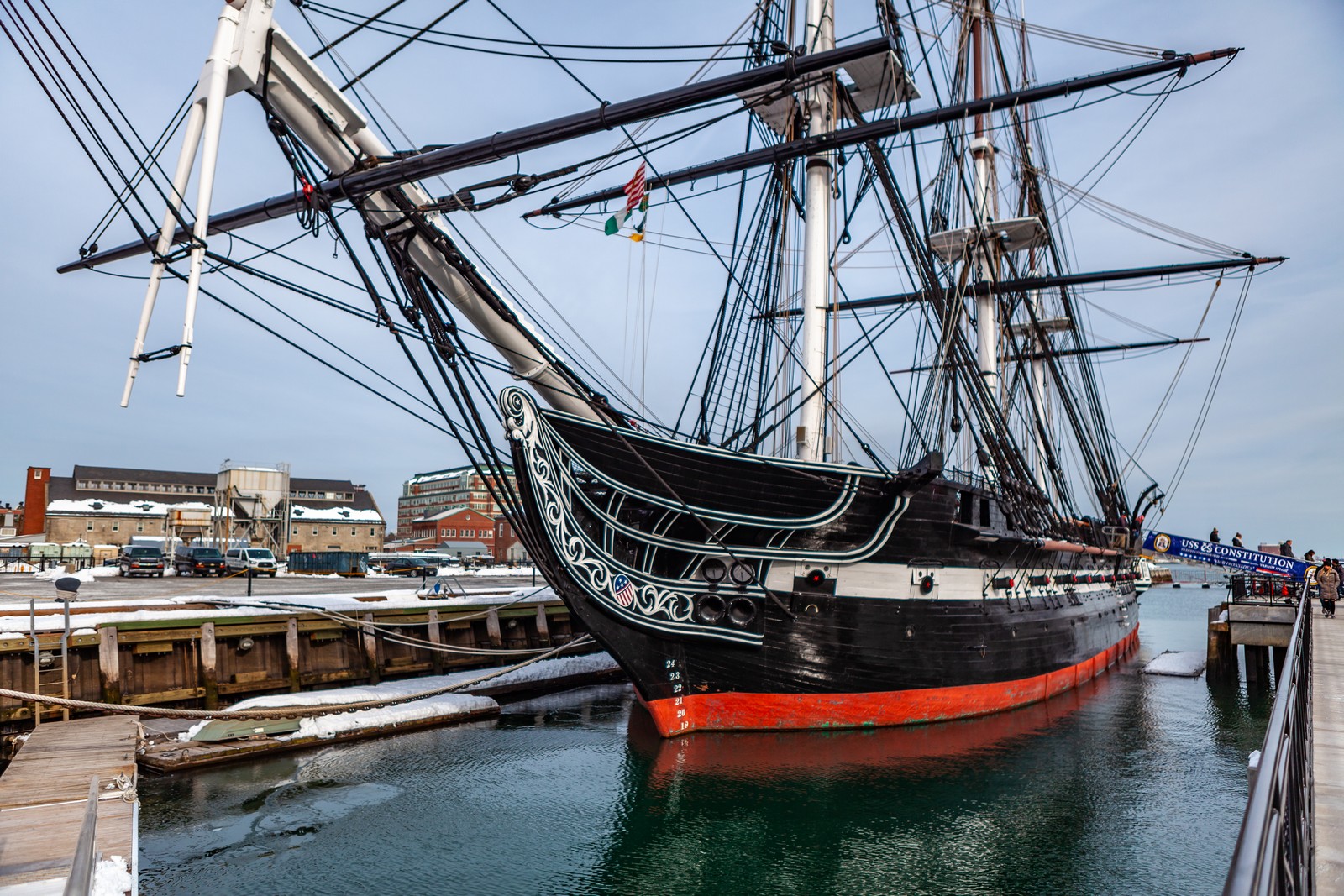 Included in our Best of Boston Tour, is the world’s oldest commissioned warship afloat the USS Constitution, also known as “Old Ironsides” located in the former Charlestown Navy Yard. Launched in 1797, this wooden-hulled three-masted heavy frigate was one of the original 6 frigates authorized by the Naval Act of 1794. The ship was used during the War of 1812 against the United Kingdom defeating numerous warships including HMS Guerriere. The USS Constitution retired from service in 1881, serving as a receiving ship until 1907 and in 1934 she completed a 3 years, 90-port tour of the nation, celebrating her 200th birthday in 1997 and 200th anniversary of the victory over Guerriere in 2012. Today, you can visit the USS Constitution Museum to understand the navy’s role in war and peace through exhibits, daily programs, and historic demonstrations put on by her crew of 60 officers and sailors.
Included in our Best of Boston Tour, is the world’s oldest commissioned warship afloat the USS Constitution, also known as “Old Ironsides” located in the former Charlestown Navy Yard. Launched in 1797, this wooden-hulled three-masted heavy frigate was one of the original 6 frigates authorized by the Naval Act of 1794. The ship was used during the War of 1812 against the United Kingdom defeating numerous warships including HMS Guerriere. The USS Constitution retired from service in 1881, serving as a receiving ship until 1907 and in 1934 she completed a 3 years, 90-port tour of the nation, celebrating her 200th birthday in 1997 and 200th anniversary of the victory over Guerriere in 2012. Today, you can visit the USS Constitution Museum to understand the navy’s role in war and peace through exhibits, daily programs, and historic demonstrations put on by her crew of 60 officers and sailors.
FUN FACT: the USS Constitution gained the nickname “Old Ironsides” when cannonballs from the HMS Guerriere appeared to have bounced off her hull!
For more information on how to visit the USS Constitution: USS Constitution Museum.Visit the USS Constitution With Us
9. Old South Meeting House
The Old South Meeting House was constructed in 1729 as a Puritan meeting house serving as the largest building in colonial Boston. 1768 - 1775 it became the site for massive protest meetings against British actions, the most famous of which occurred December 13, 1773, to debate the controversial Tea Tax, launching the start of the Boston Tea Party, where 342 chests of tea were dumped into the Boston Harbor by the Sons of Liberty. In 1872, the building was set to be demolished and auctioned off for its building materials. Determined to stop the demolition of the Old South Meeting House, a group named “twenty women of Boston” enlisted the help of famous Bostonians such as Louisa May Alcott and Henry Wadsworth Longfellow , with their forces combined they were able to secure enough funds to save the building and its land.The building is now open to the public as a museum continuing to provide a place for people to meet and discuss important issues of the day. The museum is filled with stories of the men and women who played important roles in the history of the Old South Meeting House.
FUN FACT: Notable members of the congregation included African-American poet, Phillis Wheatley who published her book while enslaved in 1773, and Benjamin Franklin alongside his family.
For more information and to visit the Old South Meeting House Museum visit: Old South Meeting House10. Old State House
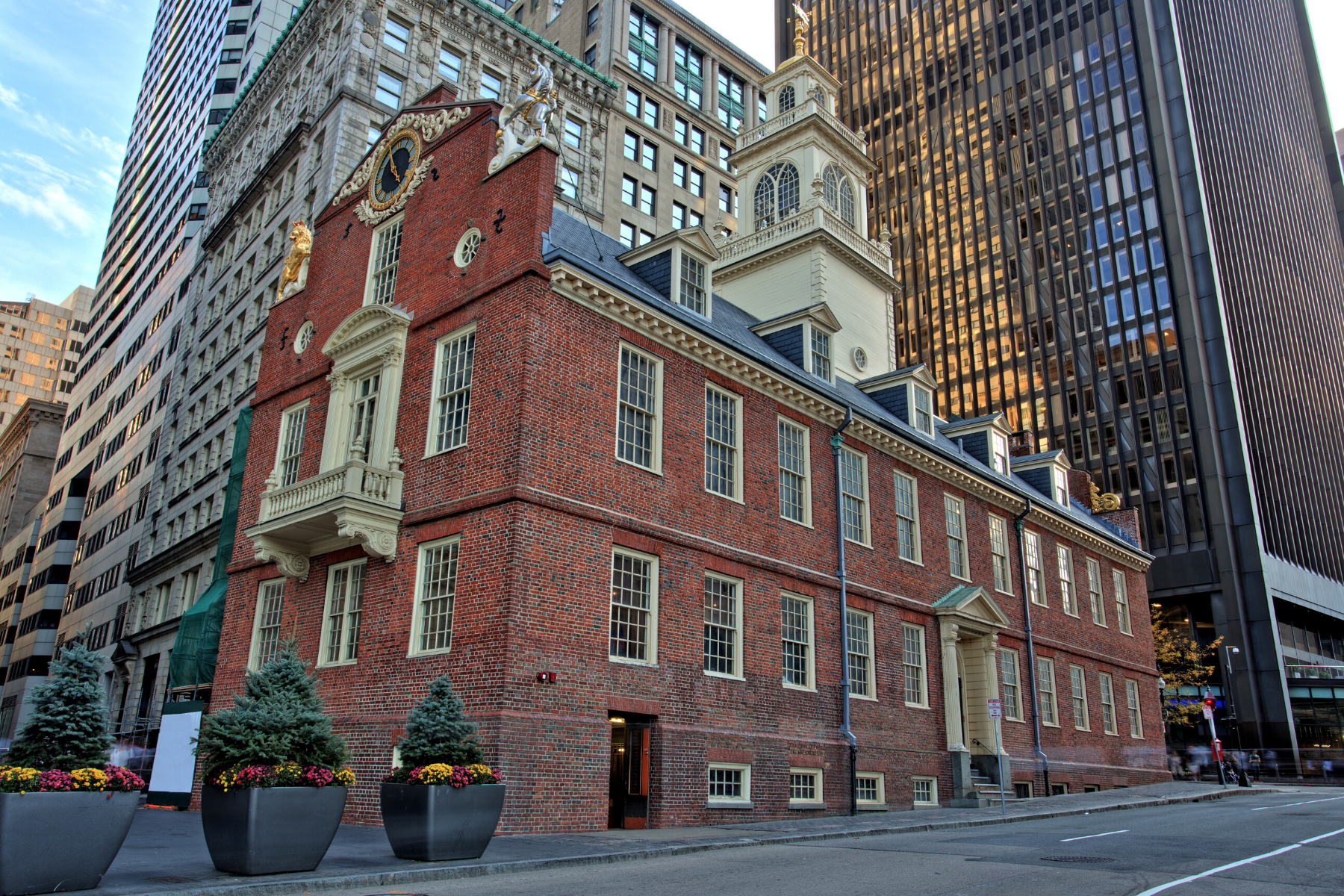 The Old State House, built in 1713 is the oldest public building in the United States, surviving the American Revolution, Boston Massacre, and the Great Boston Fire. It began as the Seat of Colony Government with the main floor serving as a Merchant’s exchange with warehouses in the basement and the Council Chamber of the Royal Governor and the chambers for the Courts of Suffolk County and the Massachusetts Supreme Judicial Court on the second floor. In 1770, on March 5th the Boston Massacre occurred right outside the very walls of the building, it was on the balcony that Lieutenant Governor Thomas Hutchinson )ordered the people to return to their homes.
The Old State House, built in 1713 is the oldest public building in the United States, surviving the American Revolution, Boston Massacre, and the Great Boston Fire. It began as the Seat of Colony Government with the main floor serving as a Merchant’s exchange with warehouses in the basement and the Council Chamber of the Royal Governor and the chambers for the Courts of Suffolk County and the Massachusetts Supreme Judicial Court on the second floor. In 1770, on March 5th the Boston Massacre occurred right outside the very walls of the building, it was on the balcony that Lieutenant Governor Thomas Hutchinson )ordered the people to return to their homes.
Then from 1776-1798, it served as the Massachusetts State House wherein 1776, member of Sons of Liberty Col. Thomas Crafts proclaimed the Declaration of Independence on the balcony. Through 1830 - 1841 it served as both Boston’s City Hall and the Boston Post Office along with several private businesses. Like many other stops along the Freedom Trail the Old State House did face the threat of demolition for real estate, to prevent this the Bostonian Society in 1881 transformed it into the building it stands today, as a museum.
FUN FACT: in 1835, Mayor Theodore Lyman Jr., granted William Lloyd , editor of the abolitionist paper, The Liberator, a temporary refugee in the building from a violent mob. For more information on the museum, visit Old State House11. Boston Massacre Site
Located outside of the Old State House is the Boston Massacre Site, a marker positioned at the intersection of State and Congress Streets that serves as a memorial to the “bloody massacre” that occurred March 5, 1770. That evening, Private Hugh White stood outside the Boston Custom House when he engaged in an argument between Captain-Lieutenant John Goldfinch and Edward Garrick , resulting in White leaving his post and hitting Garrick, a 19-year old bookseller, on the side of his head with a musket. As the night continued, 50 Bostonians, led by Crispus Attucks, an African American former slave, crowded White throwing objects at him.Eventually, as the crowd grew more violent shots were fired resulting in the death of 5 civilians, including Attucks. In the weeks following, 8 soldiers and 4 civilians were indicted for murder, and Boston’s Patriots and Loyalists had launched a propaganda battle. Tourists and Boston citizens are able to witness a reenactment hosted by the Bostonian Society every year on the anniversary of the Boston Massacre.
For more information visit: Boston Massacre Site12. Faneuil Hall
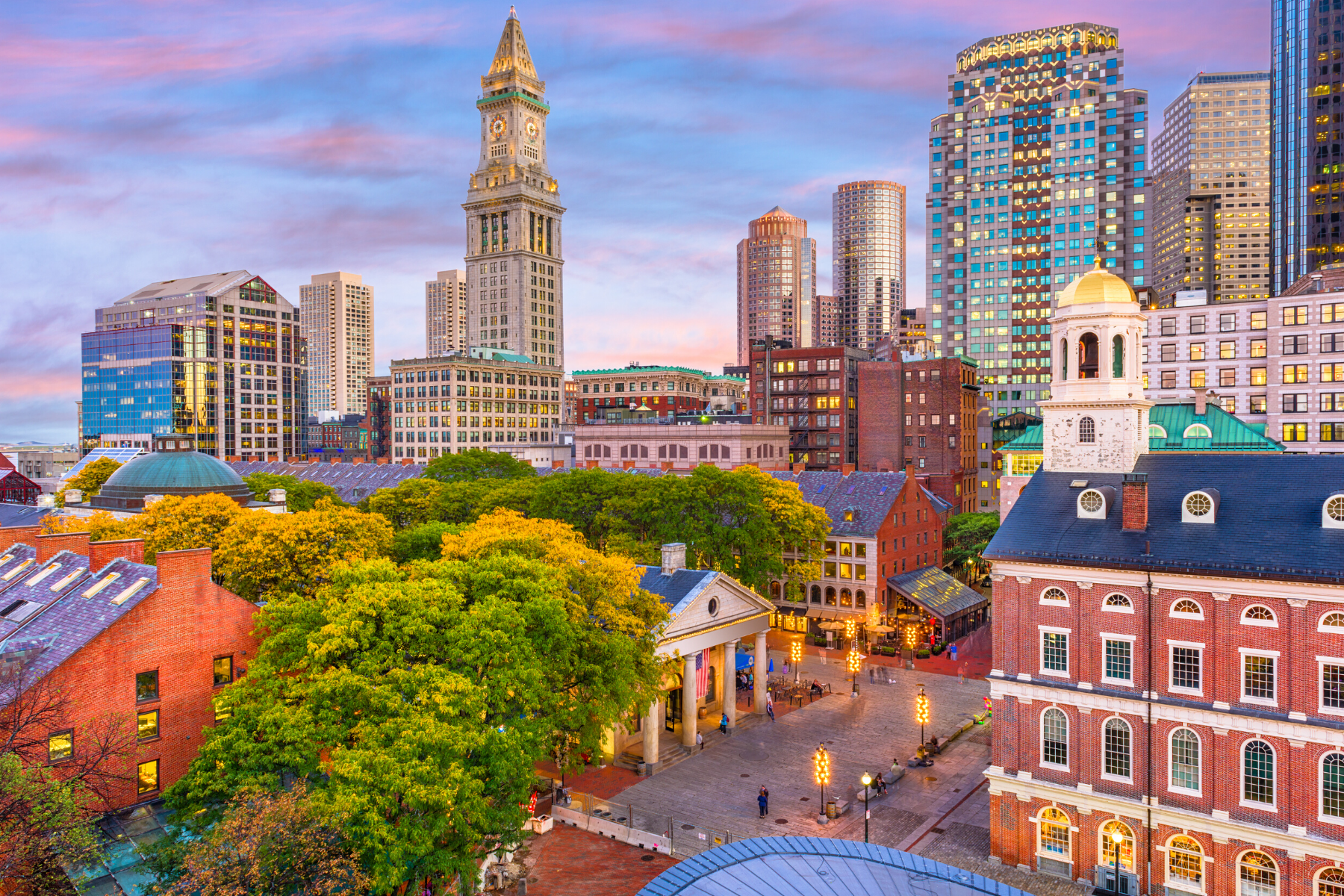 Faneuil Hall also known as “the home of free speech” and the “Cradle of Liberty” was constructed in 1764, built by artist John Smilbert who used English Country Markets as an inspiration. The original building housed an open ground floor serving as a market house with an assembly room above. In 1761, the Hall was destroyed by a fire, leaving only the brick walls in its wake, the town was able to rebuild the hall in 1762. In 1806, Charles Bulfinch expanded the hall, doubling both its height and width, adding a third floor and galleries. Sitting atop Faneuil Hall is an 80-pound golden grasshopper, the most famous weathervane in the city, designed by craftsman Shem Drowne.
Faneuil Hall also known as “the home of free speech” and the “Cradle of Liberty” was constructed in 1764, built by artist John Smilbert who used English Country Markets as an inspiration. The original building housed an open ground floor serving as a market house with an assembly room above. In 1761, the Hall was destroyed by a fire, leaving only the brick walls in its wake, the town was able to rebuild the hall in 1762. In 1806, Charles Bulfinch expanded the hall, doubling both its height and width, adding a third floor and galleries. Sitting atop Faneuil Hall is an 80-pound golden grasshopper, the most famous weathervane in the city, designed by craftsman Shem Drowne.
During the war of 1812, it is said that in an attempt to spot spies, anyone who responded incorrectly to the question: What is on top of Faneuil Hall? Would be considered suspicious. The Hall since has been the setting for 300-500 new citizens swearing-in, taking the Oath of Allegiance inside the Great Hall. Across from the historic hall is the Quincy Center and Faneuil Hall Marketplace, offering popular shopping and dining spots for visitors. To this day, the walls within the hall are decorated with paintings and sculpture busts of Revolutionary War activists, pre-Civil war abolitionists, and political leaders. You can visit Faneuil Hall and Quincy Market while on our Best of Boston Tour!
FUN FACT: Durgin Park is the oldest existing restaurant in the Faneuil Hall Marketplace, opening its doors in 1826.
13. Paul Revere House
No trip to the Boston Freedom Trail would be complete without a stop to discover the very house that the infamous American patriot, craftsman, businessman, and entrepreneur Paul Revere lived, the site where he began his 20-mile journey known as the Midnight Run. Built around 1680, this 3-story building housed Revere from 1770-1800 when Revere sold it and became a tenement with the ground floor used for shops and housing various businesses through the years.
In 1902, Revere’s great-grandson purchased the building, restoring it so it could be open to the public, opening its doors in 1908 as one of the earliest historic house museums in not only Boston but in the United States! On the evening of April 18, 1775, Revere left for his Midnight Run from this house, traveling to the Old North Church where he informed the church of the movements of the British army before riding off to Lexington alongside William Dawes to warn Samuel Adams and John Hancock of the British army approaching. Today, visitors can enter the museum to explore the artifacts related to his many business ventures.
FUN FACT: The two upper stories of the museum contain furniture that is believed to have belonged to the Revere family.
To visit the Paul Revere Museum: Paul Revere House14. Old North Church
Near the end of the historic Freedom Trail is the Old North Church, the oldest church in Boston, and the site that launched the American Revolution! Built in 1723, inspired by the works of Christopher Wren who was responsible for rebuilding London after the Great Fire, the church is the location from which the “one if by land, two if by sea” signal is said to have been sent. In 1775, Revere told three Boston patriots to watch for British troops and hang two lanterns on the church’s steeple which would serve as a warning for Charlestown patriots about the movements of the British Army.
The original steeple was destroyed by the New England hurricane in 1804 it was then replaced with a steeple designed by Charles Bulfinch but then that too was destroyed by Hurricane Carol in 1954. The current steeple incorporates design elements from both older versions, it now sits 174 feet with the original weathervane atop. Today the Old North Church is an active Episcopal Diocese of Massachusetts congregation, visitors can take a self-guided tour through the church.
FUN FACT: The Queen herself alongside Prince Philip attended a Sunday morning service at the Old North Church where she was presented with a replica of a silver chalice made by Paul Revere.
For more information on when you can visit Old North Church15. Copp’s Hill Burying Ground
Copp’s Hill Burying Ground, named after William Copp, a shoemaker and early settler, was constructed in 1659 by the town of Boston and is the second oldest burying ground in Boston. Originally named “North Burying Ground”, it contains more than 1200 marked graves of merchants, artisans, and craftspeople who lived in the North End and passed away anywhere between the colonial era and into the 1850s. During the American Revolution it became of strategic importance to the military due to its location overlooking the harbor, it is rumored that British troops used gravestones for target practice. During the Revolutionary War, more than 1,000 free African Americans and slaves were laid to rest in the burying ground and the gravemarkers and the epitaphs depicted the nature of the 17th and 18th century economy of the North End.
FUN FACT: When the Freedom Trail was created in 1951, Copp’s Hill Burying Ground was not an official stop along the trail until recently.
For more information when visiting: Copps Hill Burying Ground16. Bunker Hill Monument
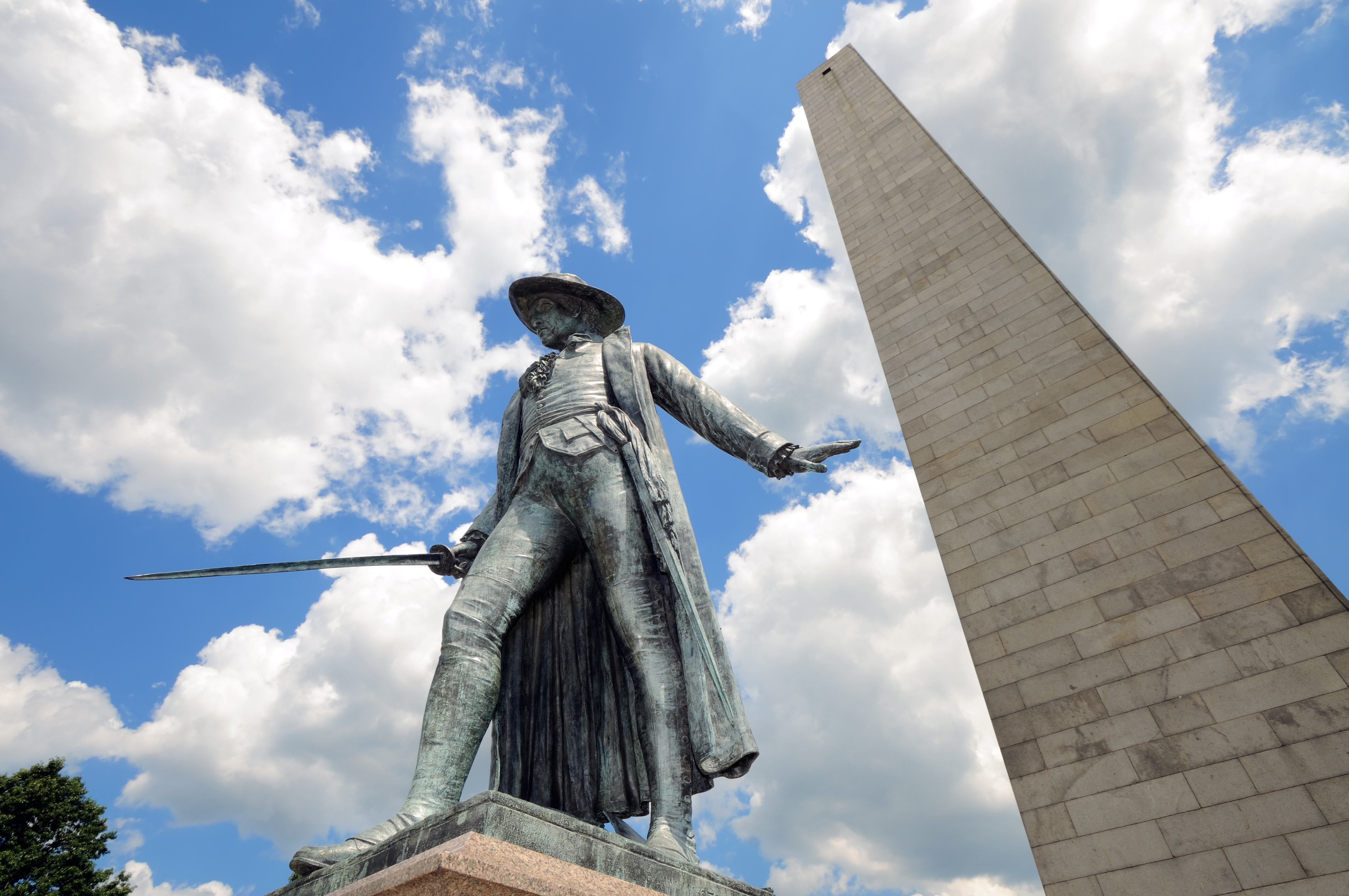 Our final stop in our Freedom Trail Tour, located in Charlestown is the Bunker Hill Monument , integral to the American Revolution. The granite monument was built to commemorate the Battle of Bunker Hill (1775), the first major battle of the Revolutionary War. The battle occurred on June 17, 1775, when New England soldiers faced the British army for the first time, though British forces were able to claim the field of the 2,400 soldiers and marines 1,000 were wounded or killed. In 1794, King Solomon’s Lodge of Masons built an 18-foot wooden pillar with a gilt urn to commemorate the fallen Patriot and Freemason, Dr. Joseph Warren, then in 1823, a group of prominent Boston citizens formed the Bunker Hill Monument Association who sought to build a more significant monument to honor the battle.
Today, it is home to the Bunker Hill Museum where visitors can view dioramas, murals, and artifacts from the battle including a cannonball, a sword, and a snare drum, among many other items. The monument not only serves as a memorial for the event and lives lost, it also serves as a reminder to continue to fight for our freedom. The Bunker Hill Monument is also one of our stops on our Best of Boston Tour! FUN FACT: the Bunker Hill Monument, standing at 67m, was the tallest memorial prior to the Washington Monument! For more information visit: Bunker Hill Monument.
Our final stop in our Freedom Trail Tour, located in Charlestown is the Bunker Hill Monument , integral to the American Revolution. The granite monument was built to commemorate the Battle of Bunker Hill (1775), the first major battle of the Revolutionary War. The battle occurred on June 17, 1775, when New England soldiers faced the British army for the first time, though British forces were able to claim the field of the 2,400 soldiers and marines 1,000 were wounded or killed. In 1794, King Solomon’s Lodge of Masons built an 18-foot wooden pillar with a gilt urn to commemorate the fallen Patriot and Freemason, Dr. Joseph Warren, then in 1823, a group of prominent Boston citizens formed the Bunker Hill Monument Association who sought to build a more significant monument to honor the battle.
Today, it is home to the Bunker Hill Museum where visitors can view dioramas, murals, and artifacts from the battle including a cannonball, a sword, and a snare drum, among many other items. The monument not only serves as a memorial for the event and lives lost, it also serves as a reminder to continue to fight for our freedom. The Bunker Hill Monument is also one of our stops on our Best of Boston Tour! FUN FACT: the Bunker Hill Monument, standing at 67m, was the tallest memorial prior to the Washington Monument! For more information visit: Bunker Hill Monument.
Now we have made it all the way through the historic Freedom Trail from downtown Boston at the Boston Common, to the Bunker Hill Monument in Charlestown. Traveling through 2.5 miles (4km) tour through multiple historic sites that played crucial roles in American history. From some of the oldest churches in Boston to the monuments that commemorate important patriots of the American Revolution, you have taken some of the same steps Paul Revere took during his infamous Midnight Run.
If you enjoyed our tour of the Freedom Trail and exploring historic Boston, make sure to check out our Best of Boston Tour which includes both a narrated driving experience and a walking tour!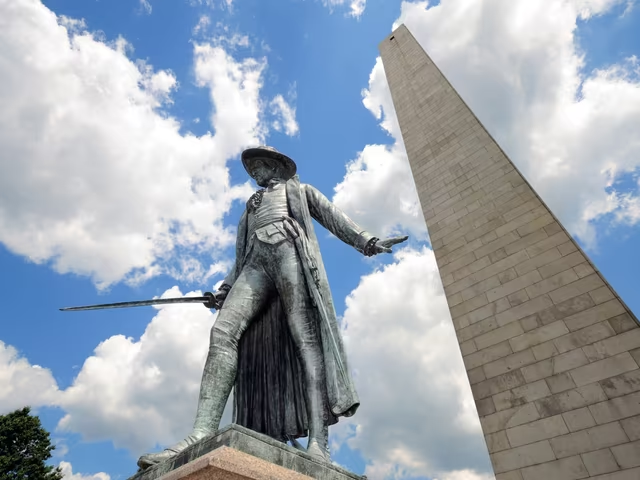
Best of Boston Walking Tour with USS Constitution and Boat Cruise
4 Hours
Discover Boston's rich history on foot, featuring iconic landmarks and stories of the American Revolution. End your journey with a scenic boat cruise and a visit to the USS Constitution.
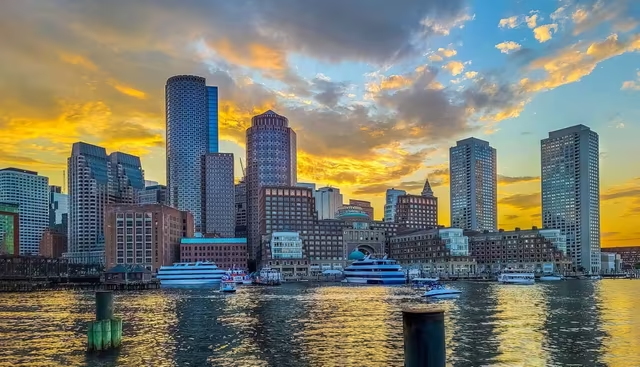
Scenic Boston Night Tour
2.5 Hours
Uncover Boston's captivating history with See Sight Tours. Explore landmarks, indulge in a Boston Cream Pie, and enjoy our small-group tour. Book now for a memorable historical experience.
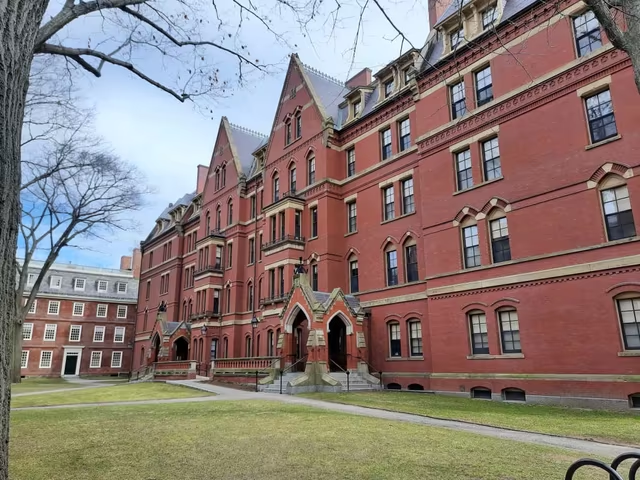
Best of Boston Exclusive Private Tour
4 Hours
This exclusive private Boston tour includes top attractions like USS Constitution, Bunker Hill Monument, Harvard, and a Boston Cruise
Related Blogs
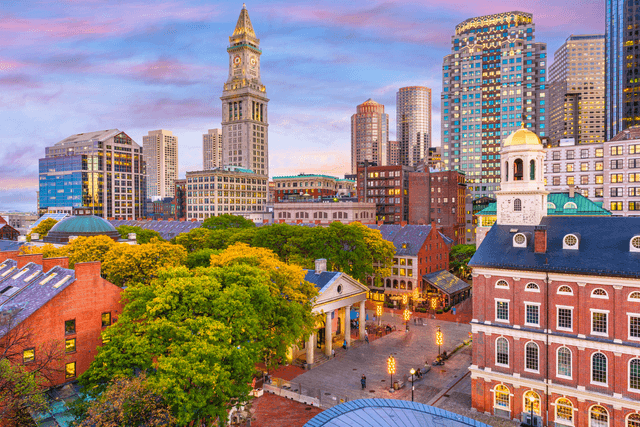
Boston Through the Seasons: Temperature Talk and Attractions
Let us help you plan your next trip to Boston, MA no matter what season you plan on visiting
Stephanie Webb
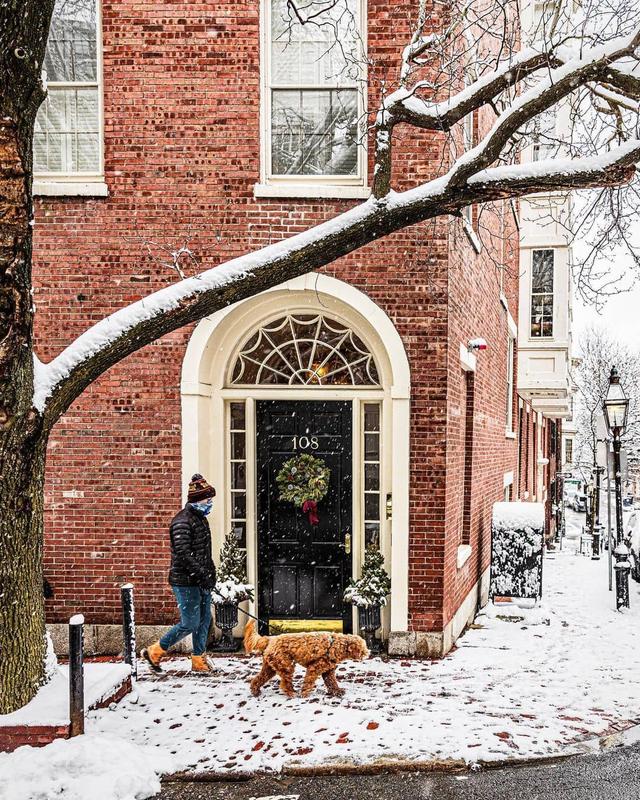
Visiting Boston in December
Embrace the holiday spirit in this winter wonderland, where every corner tells a story and each moment is touched by the magic of Boston's December allure.

Ammara Younas
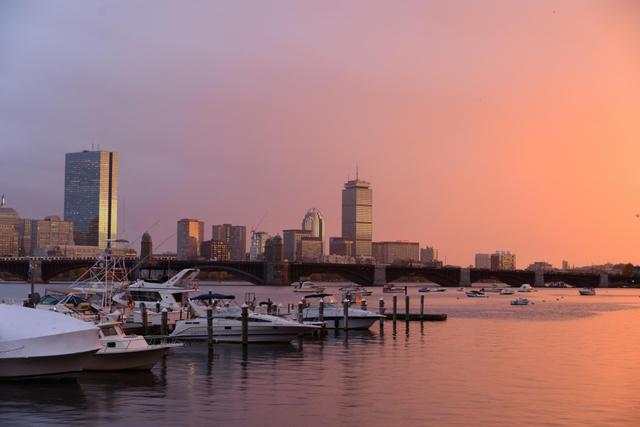
Things to Do in Boston this Weekend
Experience the finest of Boston this weekend with our curated guide to top attractions, free events, captivating shows, and seasonal activities.

Ammara Younas
Related Tours
Quick Links
Book your Tour
Get in Touch
Toll Free
1-888-961-6584
Local
1-289-271-9767
© 2025 See Sight Tours. All Rights Reserved.
1-888-961-6584

